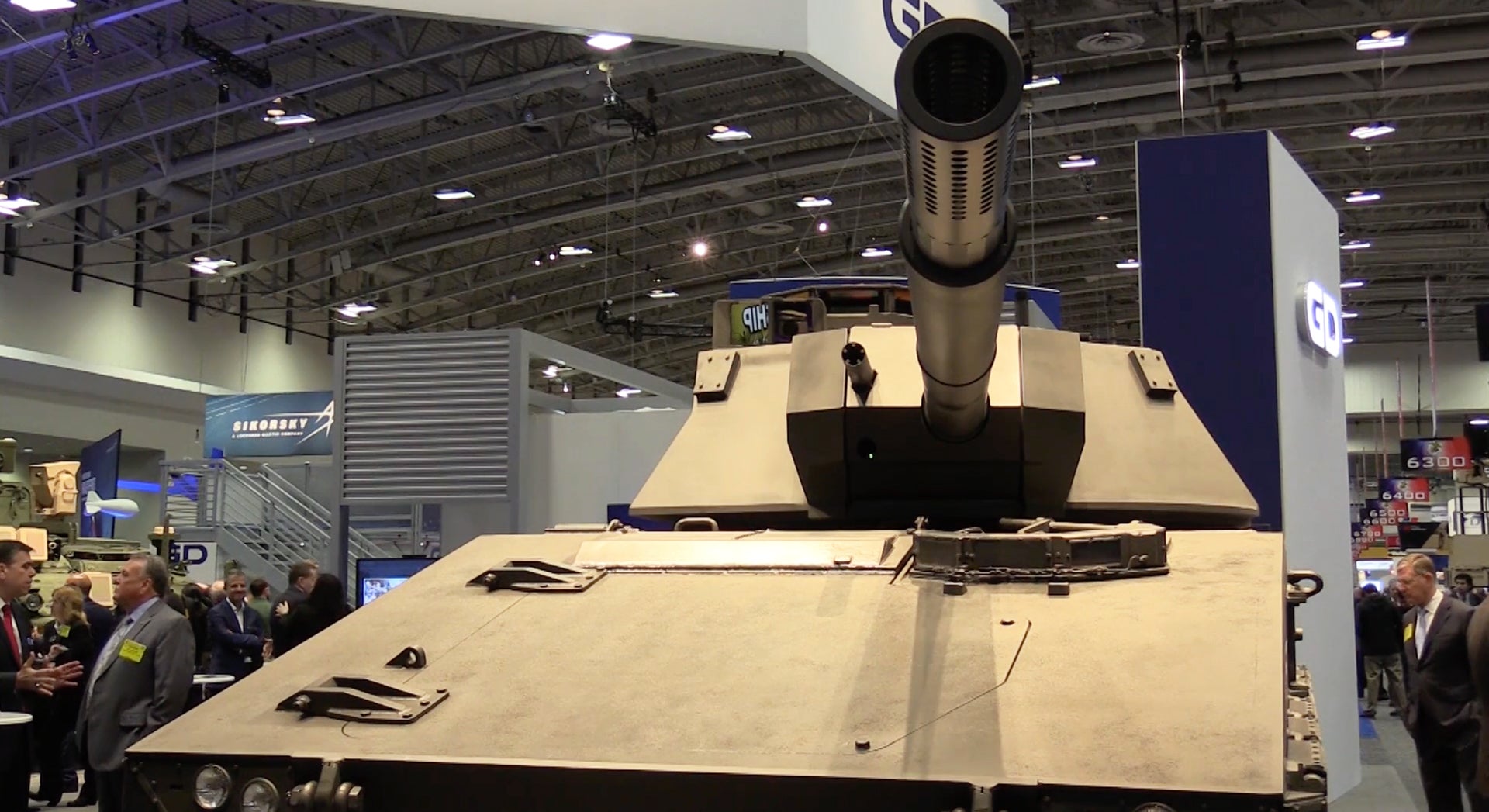The Army’s long search for a small tank that packs a big punch seems to never end. Now, General Dynamics is looking to do something about that with their new Griffin tank technology demonstrator. Unveiled at this year’s Association of the United States Army (AUSA) convention in Washington DC, this little tank is meant to be a jumping off point for finally fulfilling the Army’s mobile protected firepower requirement.
The 27 ton Griffin is a franken-tank of sorts, which is not a bad thing. It uses pieces of existing technology to lower costs and development time–and also return some investment to the Army for projects abandoned years ago. The Griffin’s main gun is the XM360 120mm cannon that was designed at great cost under the now abandoned Future Combat Systems initiative. Remarkably, the gun weighs less than half the weight of the Abrams’ 120mm cannon, but it packs the same punch.
The Griffin’s turret is a scaled-down version of the M1 Abrams turret–hence the family resemblance. The change in scale reduces turret weight from 22 tons to just eight. Inside, the turret is identical the M1A2 SEP V2 Abrams according to Defensetech.org, with all the same controls, monitors, storage spaces and crew placement. It even packs the same 7.62mm coaxial machine gun as the Abrams, located next to its main gun.
The bottom half of Griffin is also borrowed, in its case it comes from the UK’s Ajax family of multi-mission armored tracked platforms. This system is about as modern as it gets, and with the UK ordering hundreds of them in multiple variants, production and research and development costs can be minimized along with overall program risk.
Mike Peck from General Dynamics describes Griffin and where it could lead:
The whole idea behind this technology demonstrator is to get the Army and General dynamics talking about how they can make this platform both suitable for Brigade Combat Teams and affordable. Any brand new weapon system will have an uphill fight when it comes to getting funded, but a project like the Griffin packages mature technologies and existing technologies in an innovative way may have a better chance of making production.
Though technology demonstrators often use off-the-shelf components, doing so has migrated to high-end production hardware as well in recent years. Even the B-21 Raider, the USAF’s new stealth bomber, is taking this approach when it comes to many of its sub-systems, lowering risk and hopefully keeping the program on track to meeting an ambitious target price per unit.
Another light tank that carried a big gun was already designed for this exact mission, the M8 Armored Gun System. The C-130 transportable M8 was designed to replace the M551 Sheridan for the 82nd Airborne, and it could have been possibly integrated with other units as well.

The Sheridan was finally retired in the mid-1990s, and although six prototypes of the M8 were built around the same timeframe, the Army stepped away from the concept. Let’s face is, land warfare was not really a hot topic at the time.
In the last few years this all changed, and expeditionary land warfare–even in denied access environments–has been a major focus within the Pentagon. This prompted BAE Sytems (who bought United Defense) to roll out an upgraded version of the M8 at last year’s AUSA conference, which also got a lot of attention. Yet the M8 does not integrate many proven technologies, including a new advanced chassis and a common turret, like the Griffin does.

General Dynamics is hoping to test the Griffin system, or a tweaked version of it, for the Army in 2017. If it were to get an Army order it’s possible the USMC could also order the system, and there are export prospects for it as well.
Contact the author Tyler@thedrive.com
